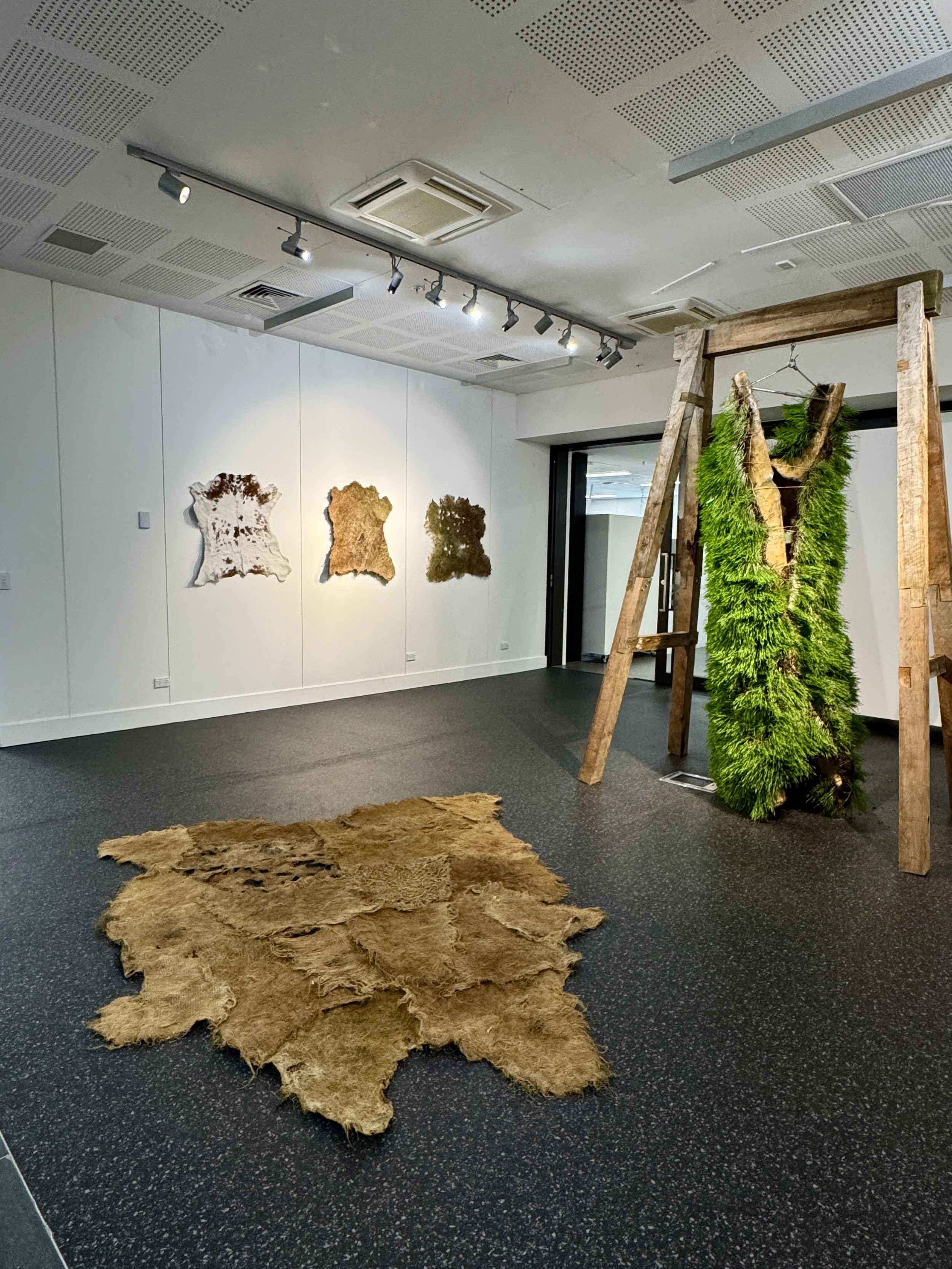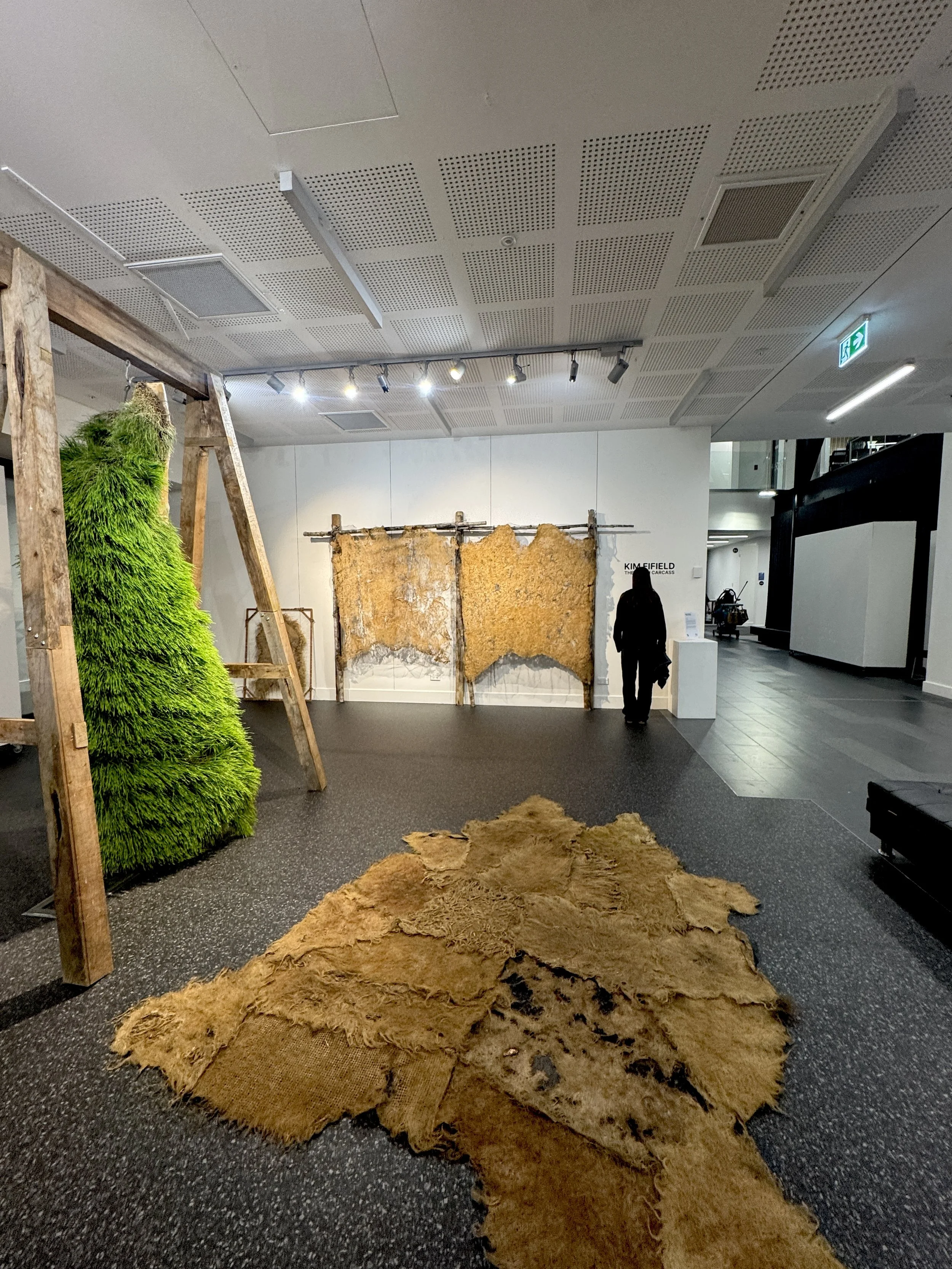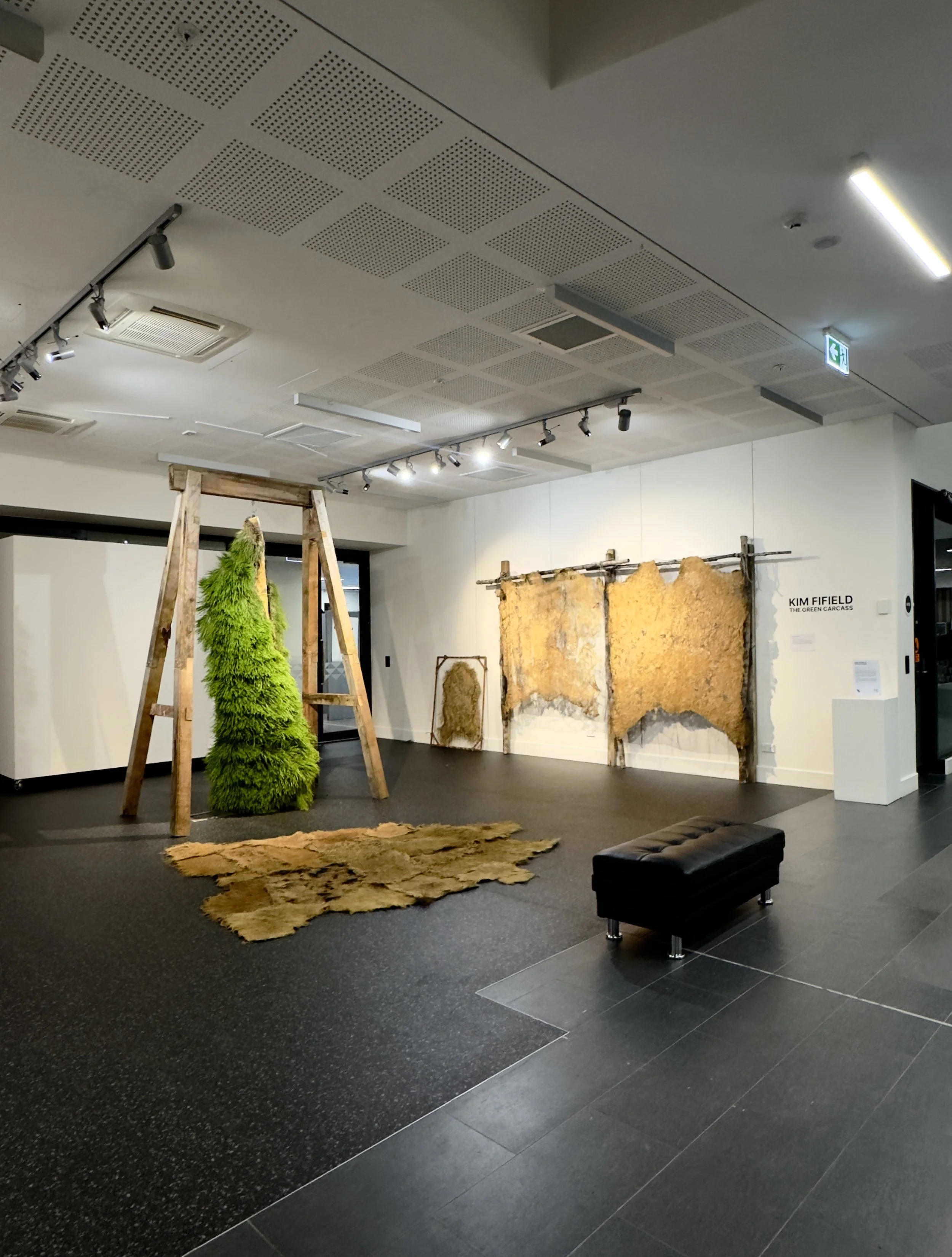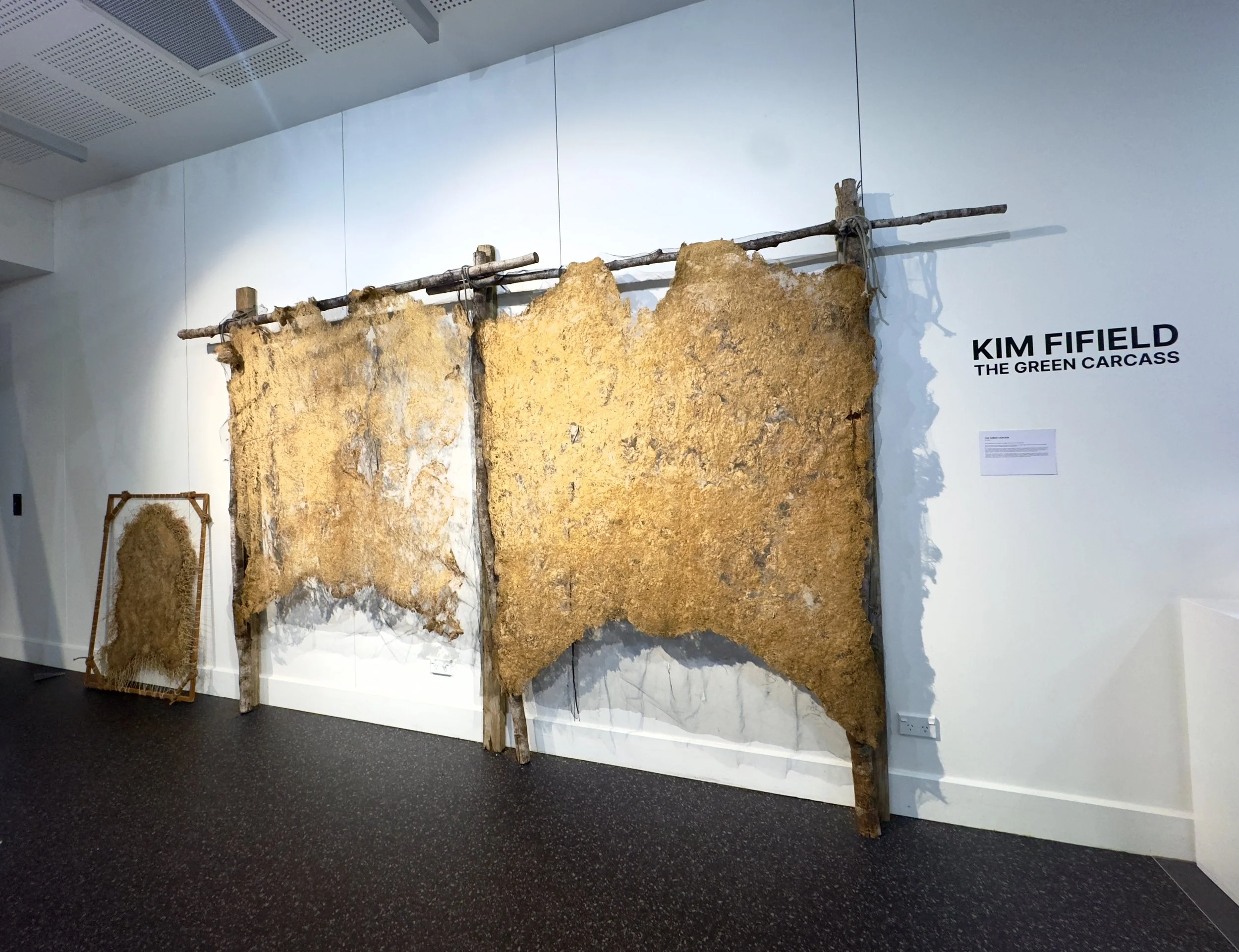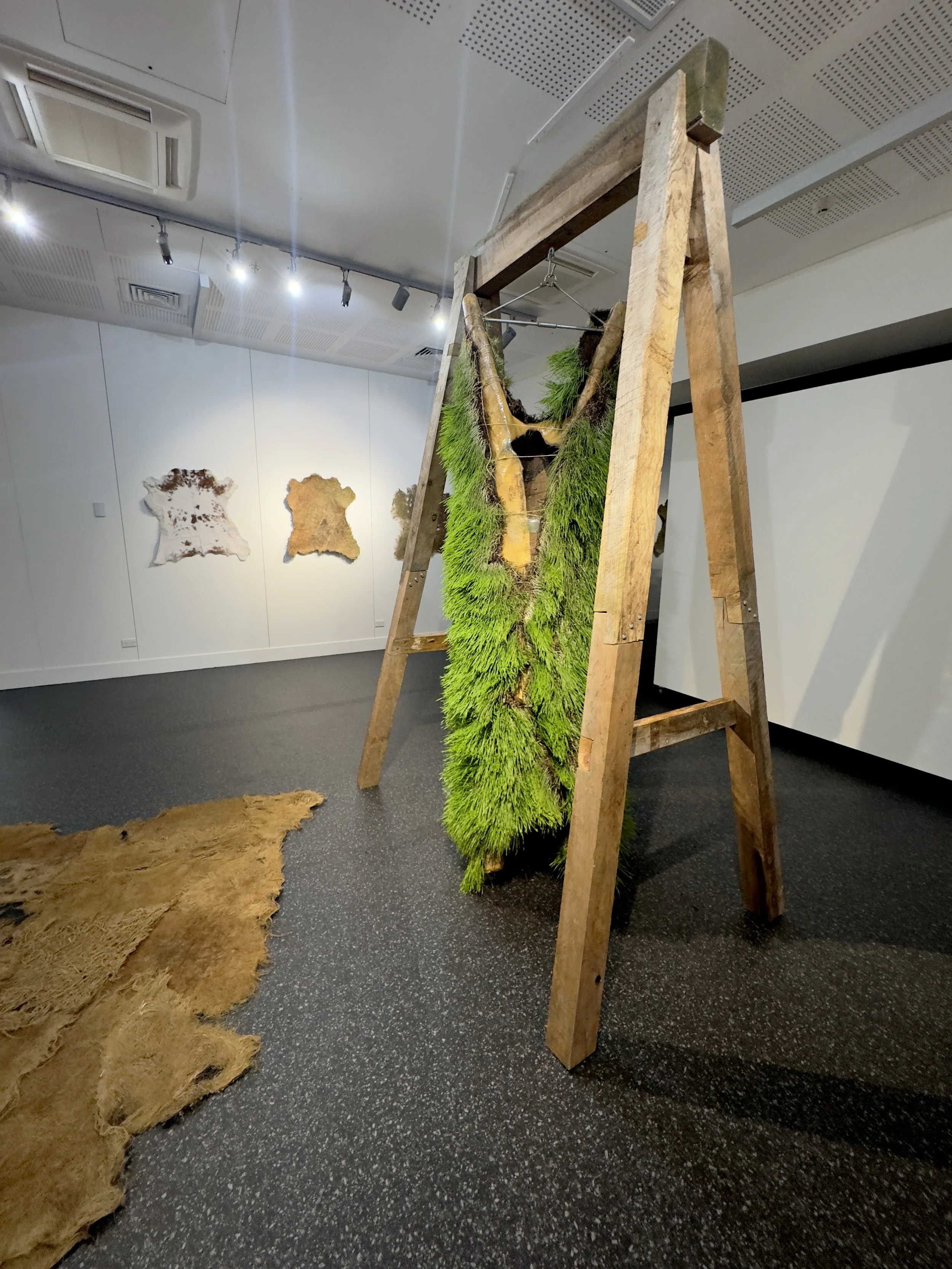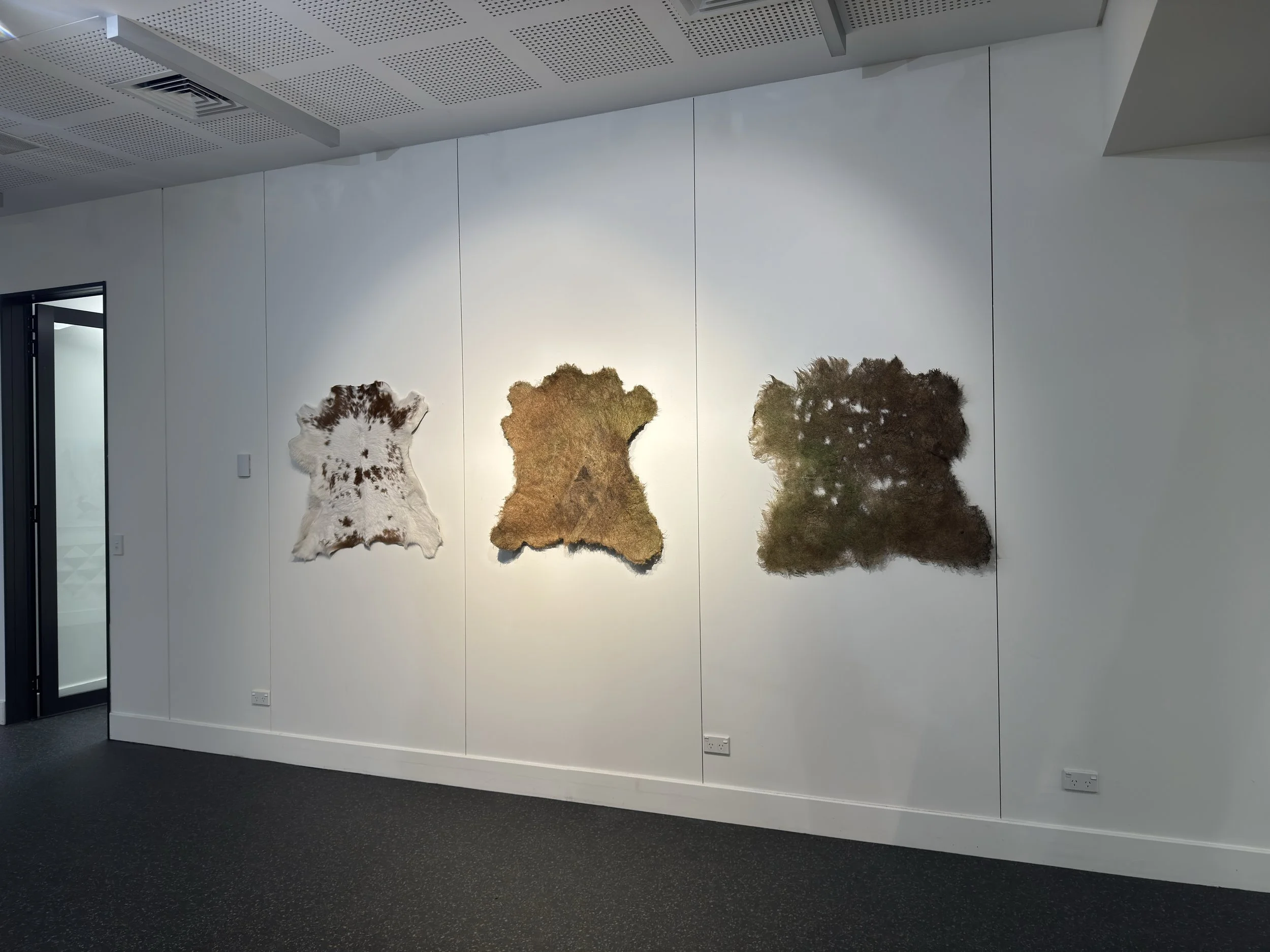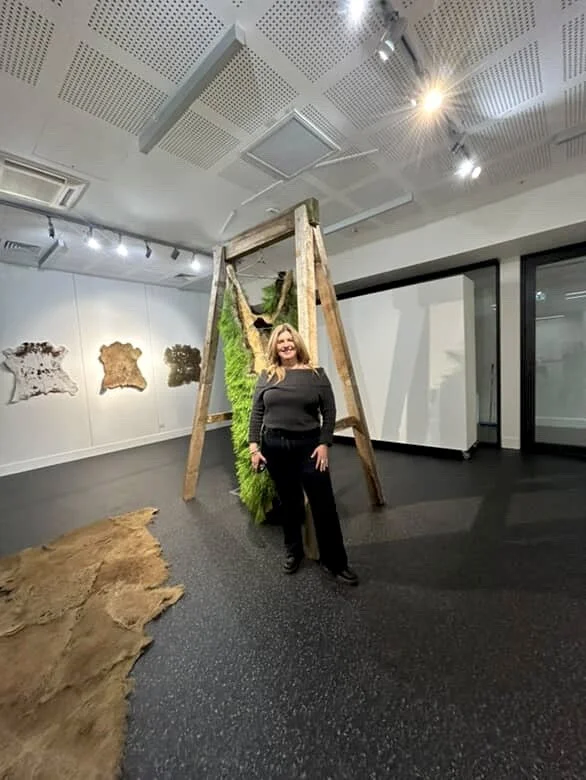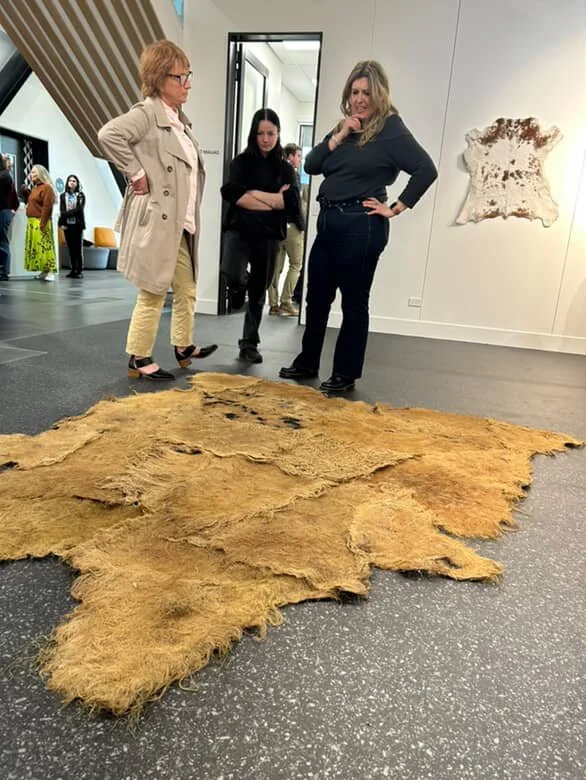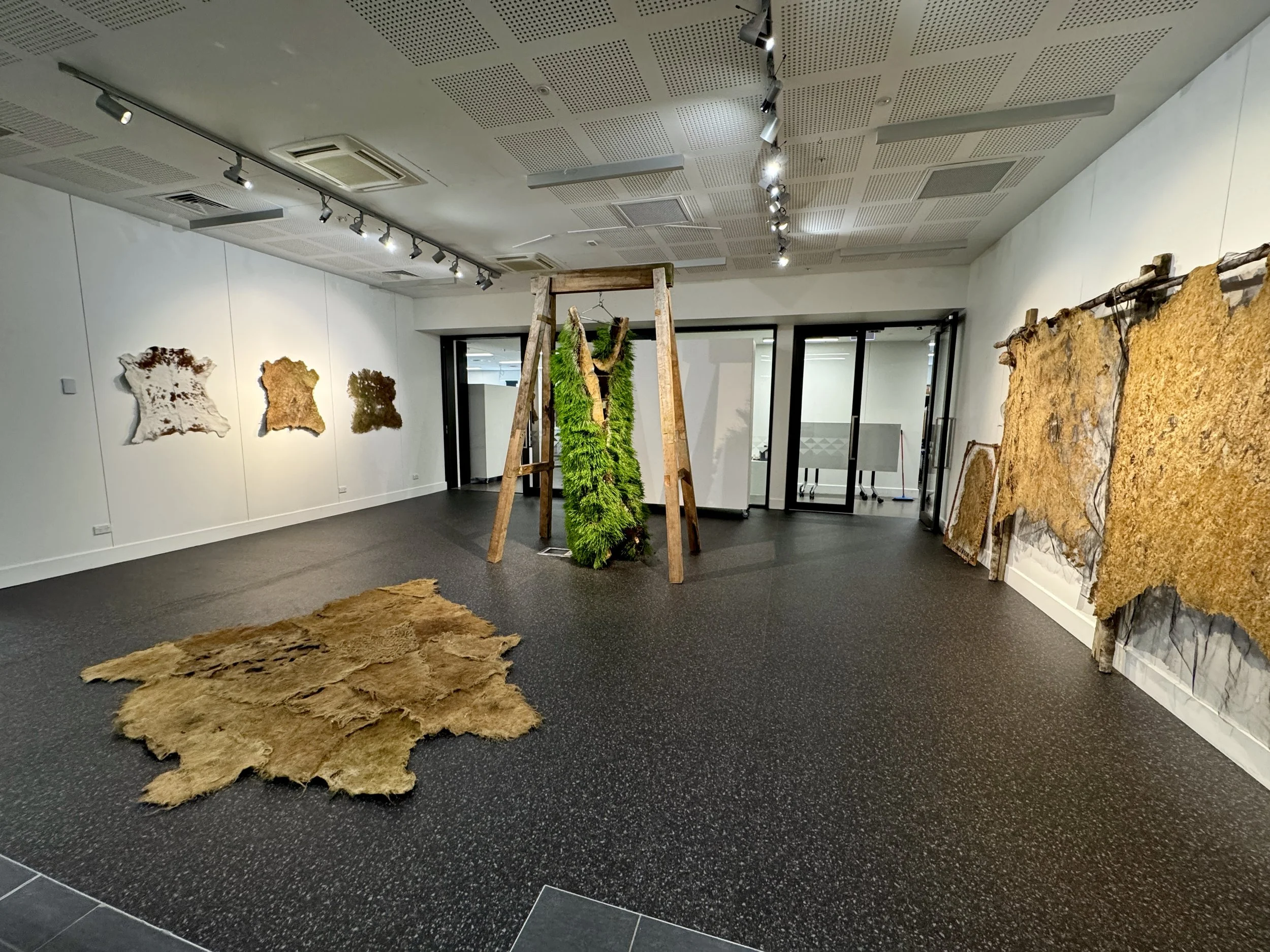
The Green Carcass
Te Ara O Mauao Gallery, Toi Ohomai Institute of Technology, Windermere Campus, Tauranga, 2025. Solo Exhibition.
Materials: Oat and wheat grass root systems, wood, rope, fibreglass, tulle, calf skin hide
This iteration of The Green Carcass was installed for a solo exhibition running from 18 August to 12 September 2025, in the Te Ara O Mauao Gallery, Toi Ohomai Institute of Technology, Tauranga.
In addition to existing works from the 2024 installation, this exhibition includes new works. Frankenhide (2025), a 2500mm x 2000mm plant-based hide assembled from root systems grown in the shape of beef meat cuts. Got Milk (2025), a series of three hides; the first of which is a cured bobby calf skin and two root system versions, which is a commentary on the savage acts of the dairy industry in breeding cows, culling newly born calves solely for the purpose of providing humans with milk for production and consumption, a largely unneccessary product but for the need of it that over time has been created through marketing and driven by capitalism. Plant-based alternatives could provide some relief from the pressure of dairy farming on the detrimental impact on the environment and on the cattle.
The Green Carcass is an installation that examines the implications of human actions within the context of the Anthropocene, particularly as they relate to ecocide, capitalism, and consumerism.
The installation addresses the ways in which human beings have become increasingly disconnected from the natural world and have systematically exploited and controlled the natural world without adequate consideration for the long-term detrimental consequences of these actions or the inherent value of other living organisms. This disconnection has been exacerbated since the transition to agrarian societies, where the drive for profit has overshadowed respect and reverence for the natural world.
Cultivated root systems have been grown to mirror the hide shapes of domesticated farm animals, which are stretched within tanning frames, transforming what is typically seen as a product of consumption into a representation of the life force of plants that sustains us, and is at our mercy. The juxtaposition of these root-based hides against the traditional concept of animal skins challenges our perceptions of value and the ethical implications of our choices. The works are a reflection on the ethical aspects of consumption and the loss of reverence and empathy towards plants and the natural environment.
The Green Carcass serves as a commentary on the urgent need for a paradigm shift in how humanity engages with the environment, advocating for a more sustainable and respectful approach to coexistence. It urges us to reflect on our role as being part of nature, not apart from it, and to reconsider the intrinsic value of all life forms and the long-term repercussions of our relentless pursuit of growth and consumption at any cost.
